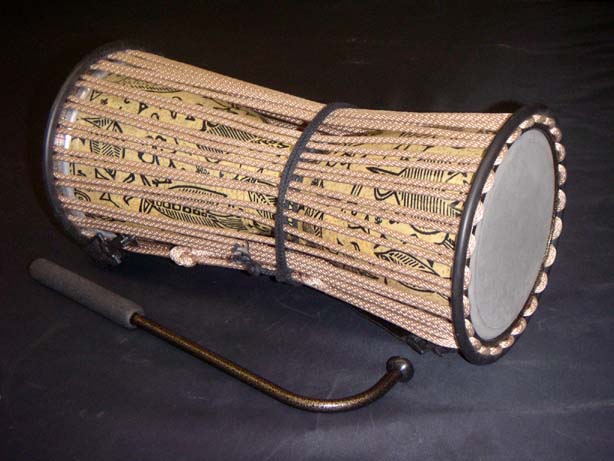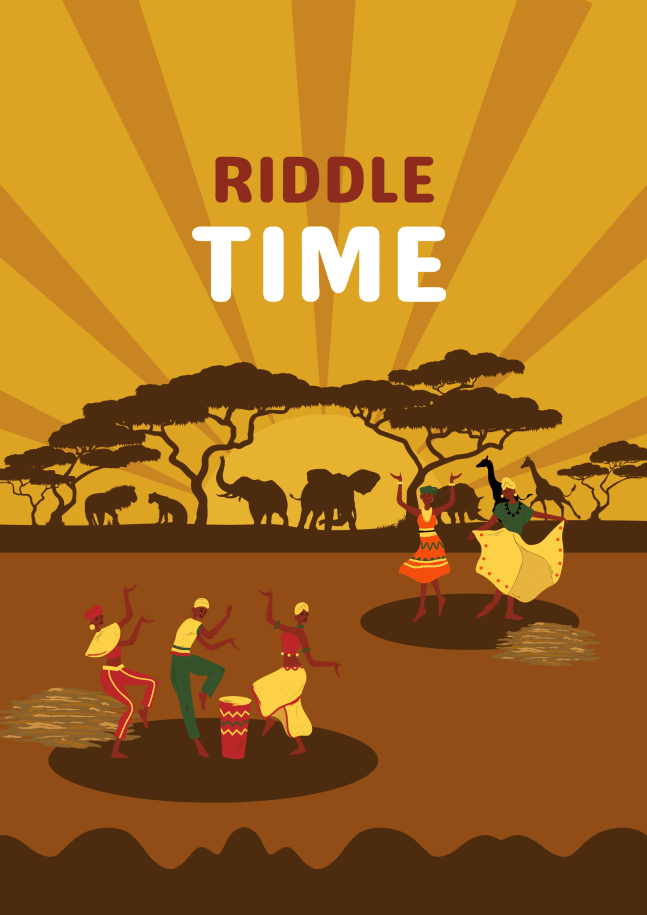Gbogbo alangba lo d'anu dele, a ko mo eyi t'inu nrun (Yoruba Proverb)
Translation: All lizards lie flat on their stomach and it is difficult to determine which has a stomach ache.
And someone had the nerve to call this kind of communication uneducated? Ha! If only I could be this profound...
Oh right, you're probably wondering what it means.
Meaning: Everyone looks fine on the outside, but we all have hidden struggles.
Deep, right?
Speaking of unique ways to communicate, let's talk about something that really beats all: Talking drums!
Forget smartphones - these bad boys were dropping beats and spilling tea before it was cool!
🎵Tune tip-off - TEMS | 1 Hour of Chill Songs | Afrobeats/R&B
The Talking Drums of Ghana
In traditional societies, the most common forms of communication included sending messengers (on foot of course), smoke signals, blowing horns, and beating drums. The former, sending messengers, served as a direct form of communication, where the message was passed directly from party A to party B.
The others, however, were more like a call, urging the villagers to gather at a particular place to receive the news. Once you’d see a huge cloud of smoke emanating from person A’s homestead, everyone in the village would rush over to see what was the matter. Likewise, when you’d hear person B blowing a horn you’d rush over to listen to the matter. Same case as when you’d hear the beating of drums. They were indirect forms of communication.
However, there was an exception to this last case. The people of Ghana have, for the longest period, been using drums to pass their messages. But their drums aren’t like any other ordinary drum. They are, in fact, talking drums.

Source: Wikimedia
These drums are hourglass-shaped drums that have two drumheads on either side, which are connected to length by leather tension cords. These drums are special in that their pitch can be regulated to mimic the tone, intonation, stress and rhythm of human speech. Therefore, they usually sound like a human, depending on how they are played.
To play it, the drummer usually tucks the drum under his arm (between the arms and the ribs) and then taps the drumhead with his hand. In order to change the pitch of the drum, he will simply squeeze the drum between his arm and his ribs, thus causing the leather cords to get tense. When squeezed, it, thus, produces a higher note than when it is in its relaxed state. And the pitch itself can be changed with every single beat.
This talking drum is one of, if not, the oldest instruments in West Africa. It has its origins in the 7th century, and so, has now been used for around 1,400 years, and still is in use. As we mentioned, it was mostly used in direct communication, and so, travelling storytellers and musicians would carry it around with them in order to pass the oral traditions of their people.
Messengers being sent from one region to another would also be requested to learn the drum phases for every word. Messages would then be conveyed between the drum players, starting from the name of the recipient, followed by the name of the sender, and then finally, the message. They could also be used to communicate, for over 6km, about the news of any ceremony.
We discussed that the drums don’t really capture a person’s quality of the vowels and their consonants. However, it captures the pitch, the volume and the rhythm of human speech. It has, therefore, been hard to communicate some of the complex messages.
For each short word that was beaten on the drum, an extra phase was added, to provide context to the main drum signal. For example, the message “Come back home” would become “make your feet come back the way they went, make your legs come back the way they went, plant your feet and your legs below, in the village which belongs to us.”
The extra phrases provide a context to understand the main message that is being passed. Therefore, when learning how to play the drum, the students are taught the particular phrases that coincide with each word.
A normal sentence that would take a very short while when communicating ends up taking eight times longer. There is the aspect of efficiency in terms of the message, but is it really worth the time? Is it a worthy compromise? You tell me!
The use of those drums declined once the West sought to take part in the practice, back in the 19th century. However, these drums remain very popular, and thus, have been used quite a number of times in popular culture. For example, Erykah Badu used it in her song ‘My People,’ Fleetwood Mac used it in their song ‘World Turning’, Cleo Sol used it in their song, ‘When I’m in Your Arms’ etc. It is interesting to note that, even with the advancement of technology on all frontiers, these drums still have some relevance in society.
Further Reading
📚The Talking Drums of Africa by J. F. CARRINGTON
🧐 When Music Speaks: An Acoustic Study of the Speech Surrogacy of the Nigerian Dùndún Talking Drum
🎵The Talking Drum in Nigerian Pop Music -- Fuji Music
Special Mentions
📌Something I can't place is lost in translation
🎥The Language You Cry In - Must Watch
Enjoy This Newsletter?
Forward it to a friend, and let them know they can subscribe here.
Whenever you need help translating any African language, help is available here.
Remember, it is time to tell our stories.
Till next time, Mike.
Join the Lughayangu Community!

